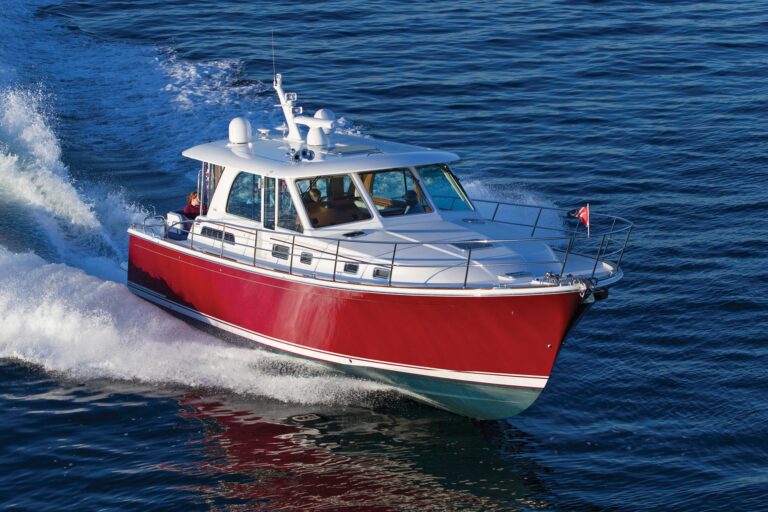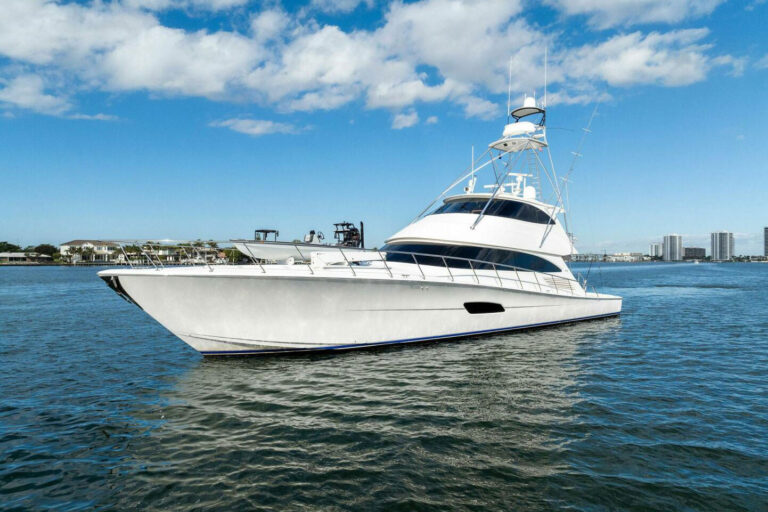A handheld marine VHF radio is not just a valuable convenience; it can also be a lifesaver, alerting the Coast Guard to your position if you are in one of the new Rescue 21 regions. But selecting the right radio from the 25 models offered by five manufacturers and one private label can be confusing, especially since all of these radios meet essentially the same minimum standards. What do you do? Start by keeping in mind the following criteria.
1. How Wet Can It Get? Even if you have the best intentions, a handheld radio is likely to be dropped on hard surfaces and into the water. Twenty of the sets listed on the chart on the following page are rated as conforming to the JIS7 submersible specification (can be submerged to a depth of one meter for 30 minutes). The others are rated as meeting the “splashproof” JIS4/CFR46 specification. Regardless of the set’s environmental specs, do not assume that the radio will float. Remember that the waterproof integrity of all radios will deteriorate over time as the delicate gaskets that seal the battery compartment and, on some sets, rotary controls as well, age. As with all electronics, keep handhelds dry and as cool as possible.
2. Channel Choices Channel mapping (U.S., Canadian, International) simplifies the selection and the proper pairing of transmitting and receiving frequencies. All of the listed VHF radios (except the survival craft) can receive the NOAA weather broadcasts, and all but four have an automatic weather-alert feature. A few radios can receive signals on the AM or FM broadcast bands and the VHF/AM aviation bands so you can get traffic reports, from the highway or the airport. And though it is unlikely that anyone will accost you if you use a marine handheld when on shore, you should be aware that such use is prohibited. Want to use the VHF like a walkie-talkie with your kids? The Standard HX-471S and the West Marine VHF 250 have family radio service (FRS) channels that are perfectly legal for such use.
3. You Got the Power? The amount of energy transmitted by the radio (typically between a fraction of a watt and sometimes as high as six watts) can determine the ability of the radio’s signal to overcome a competing signal from another transmitter. Transmitter power plays a minor role in determining the maximum range at which the signal will be heard. Unless you are having trouble getting a signal, though, use the minimum power setting necessary for communication. That’s considered good radio etiquette and will conserve battery life.
4. Battery Life Speaking of which, the type of battery used to power the radio is an important part of your selection criteria. Radio operating time, estimated with a fully charged battery, is based on 90 percent standby (no audio signal present), 5 percent with the audio amplifier operating and 5 percent transmit time at the radio’s highest power setting. To save power, always keep the radio on the lowest setting you need to communicate. At this time, the lithium-ion battery (Li-ion) can store the most energy per cubic inch, is the fastest to recharge and loses the least energy when not being used (with nickel-metal hydride a close second). Nickel cadmium batteries, once ubiquitous, are rarely used because of their relatively high self-discharge rate and low power density. An alkaline-cell battery tray is always a desirable option and is a necessity if the radio is to be carried in a ditch bag or packed with a life raft. Rechargable batteries cannot hold a charge for the long period that elapses between life-raft inspections and may be unusable when the raft is needed. Since the shelf life of alkaline cells is usually about five years, be sure to mark and check your safety gear annually.
5. Ready for Rescue 21? The advent of Rescue 21, the Coast Guard’s new automatic distress notification system in U.S. coastal waters, will place a premium on handhelds that can transmit DSC distress calls (see March 2006, “The Button That Will Save Your Life”). At this time, one set, the Uniden Mystic, provides this capability with a built-in GPS receiver. Two other VHF radios, the Standard Horizon HX 471S and the HX 600S, provide DSC emergency calling when programmed with the vessels’ MMSI and will include latitude/longitude information when locked in the charging base connected to the vessel’s GPS receiver.








